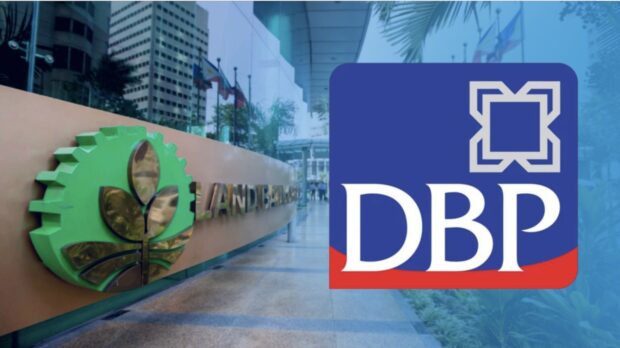Fitch: Landbank, DBP to face credit woes sans relief

INQUIRER FILE PHOTO
The credit strength of Land Bank of the Philippines (Landbank) and Development Bank of the Philippines (DBP) may weaken after their hefty contribution to the Maharlika Investment Fund (MIF) if no mitigating measures are put in place to help the two state-run banks shore up their defenses against potential losses, Fitch Ratings warned on Thursday.
Tamma Febrian, director at Fitch Ratings’ Asia-Pacific Financial Institutions team, said the debt watcher had already taken into account a possible decline in Landbank and DBP’s buffers against possible losses when it affirmed the two lenders’ triple-B credit rating last April.
If not fixed, Febrian explained that liquidity problems may eventually hurt Landbank and DBP’s lending activities.
READ: No special treatment for DBP and Landbank, says BSP chief
Landbank is the country’s biggest credit provider to the agriculture sector and rural development, which cornered 69 percent of the bank’s P1.04-trillion loan portfolio in the first half.
Article continues after this advertisementDuring the same period, 56 percent of DBP’s total loan portfolio of P507 billion was used to bankroll public infrastructure projects.
Article continues after this advertisement“Our general view is that LBP and DBP’s underlying loss absorption buffers are poised to weaken on the back of their contribution to [the MIF], irrespective of regulatory forbearance that may be provided to the banks,” Febrian said.
BSP relief
“This may also pressure their standalone credit strengths, in the absence of other mitigating factors,” he added.
Given Landbank and DBP’s growing policy role, however, Fitch’s Febrian said he still sees the government immediately helping the banks should they need it.
“We do not expect this to have any significant bearing on our view of the state’s propensity and ability to support the banks,” he said.
Landbank and DBP earlier sought regulatory relief as their contribution to the MIF might make them noncompliant with the capital requirements set by the Bangko Sentral ng Pilipinas (BSP).
Landbank last month remitted to the Bureau of Treasury its P50-billion contribution to the MIF while DBP turned in P25 billion.
While the lenders still met the capital requirements of the BSP after the investments in the wealth fund, Landbank and DBP had requested for regulatory relief as a “preemptive” measure.
The BSP had said that it was amenable to granting a temporary reprieve to the state-run banks, with BSP Governor Eli Remolona Jr. noting that the amount that Landbank and DBP contributed to the MIF reduced their liquidity and risked making them noncompliant with the capital requirements set by regulators.
“In principle we can provide forbearance, which allows them not to comply for a period of time,” the BSP chief said. “But they will be expected to comply at some point [because] forbearance is always temporary.”
Forbearance in banking involves granting concessions to borrowers who are unlikely to be able to repay their loans under the existing terms and conditions. Forbearance measures can take the form of refinancing or restructuring.
“They are providing essentially capital which reduces their equity [and] may put them noncompliant with our capital requirements,” Remolona noted, explaining the effect of the banks’ investment in the MIF.
“That’s mainly the form of relief they want,” he said.
Maria Cynthia Sison, director of the BSP’s supervisory policy and research department, noted that Landbank and DBP were asking for regulatory reprieve because “they don’t want their capital position to decline substantially because of [their MIF contribution].”
Capital adequacy
Michael de Jesus, president and chief executive of DBP, earlier told the Inquirer that both banks requested for regulatory relief from the BSP as a “preemptive” measure.
He said the relief that DBP was asking was related to the BSP regulation on the computation of the bank’s capital.
“We seek relief that our contribution (to the MIF) will not be deducted from capital,” De Jesus said.
Based on BSP regulations, all investments of banks, be it to allied or nonallied undertakings, will be fully charged against a bank’s capital.
This means the investment of DBP and Landbank in the MIF will be deducted from the banks’ capital when they compute their capital adequacy ratio (CAR).
This ratio compares the available capital that a bank has on hand to its risk-weighted assets, which essentially measures the risk profile of the bank’s lending and investing activities. The more risk a bank is taking, the more capital it will be required to have to protect depositors.
The CAR provides an idea of whether a bank has enough funds to cover losses and remain solvent under difficult financial conditions.